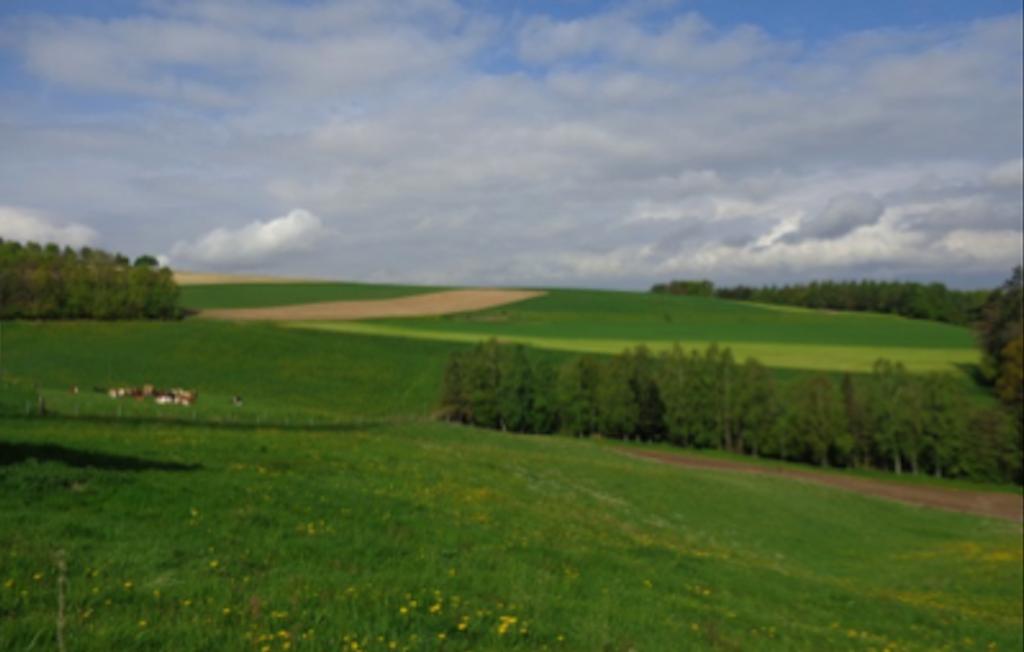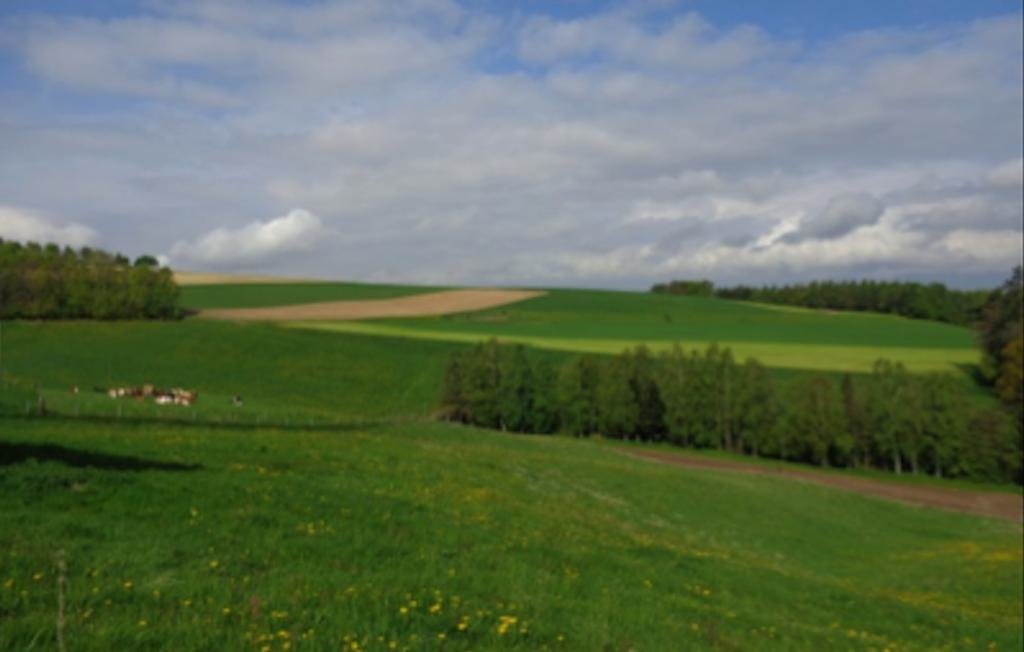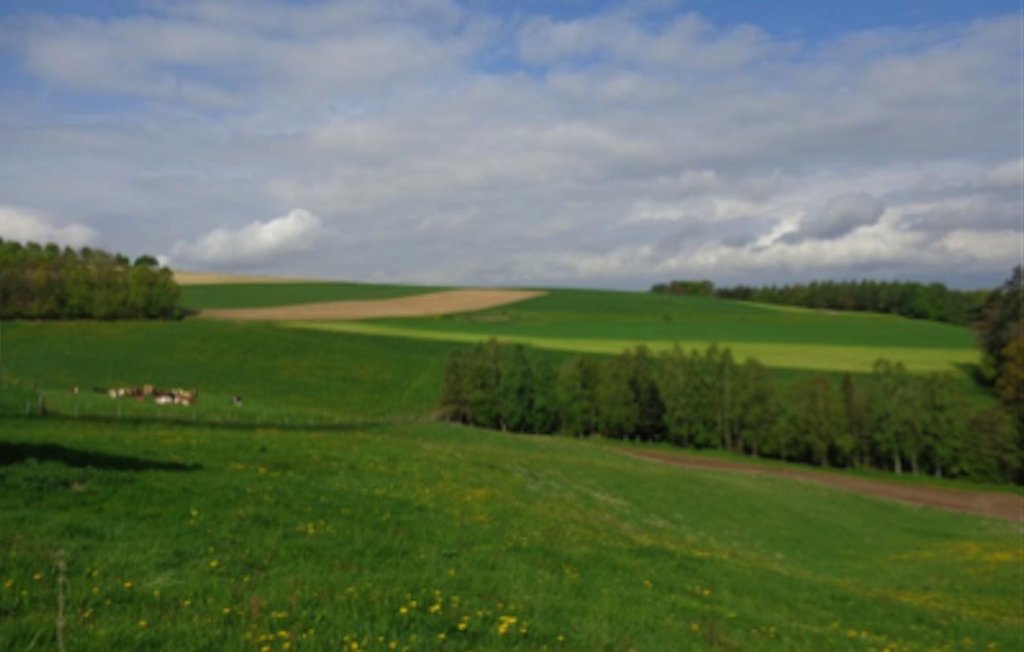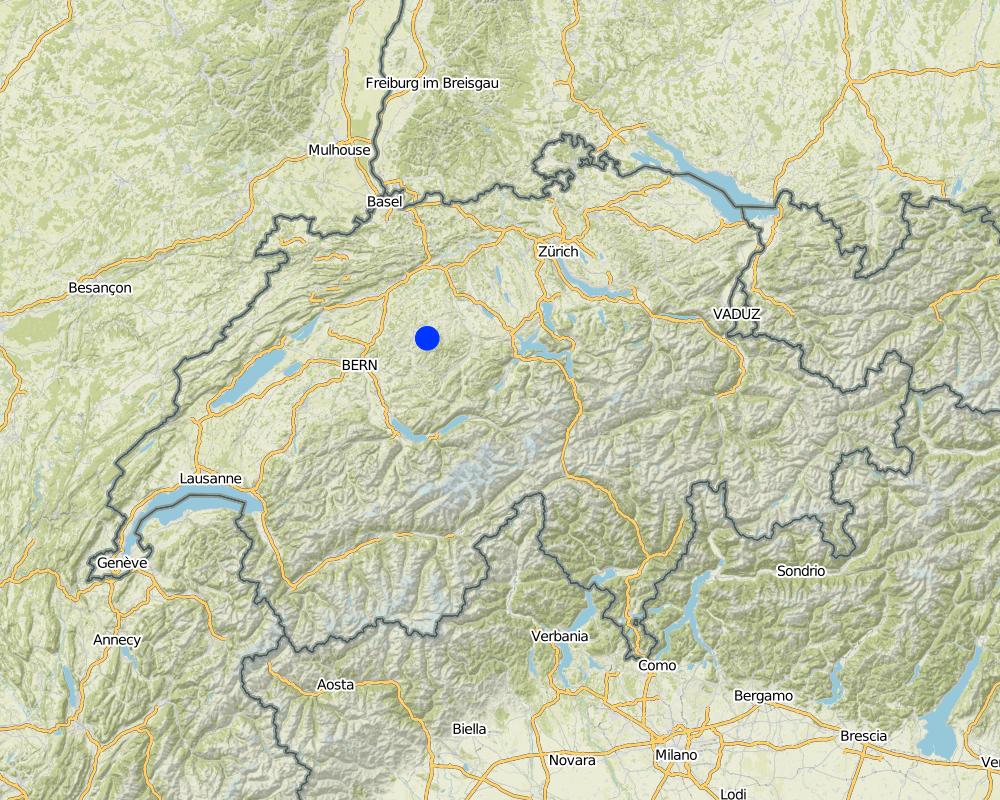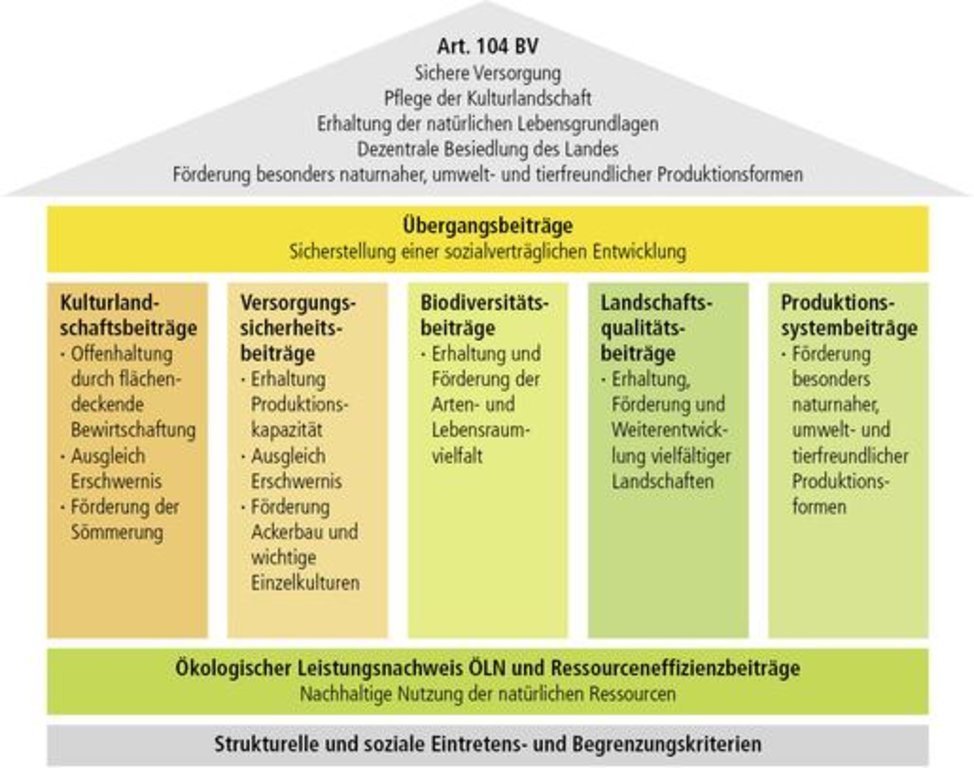Direct Payment System [Switzerland]
- Creation:
- Update:
- Compiler: Deborah Niggli
- Editor: –
- Reviewer: David Streiff
Direktzahlungssystem
approaches_2602 - Switzerland
View sections
Expand all Collapse all1. General information
1.2 Contact details of resource persons and institutions involved in the assessment and documentation of the Approach
Name of project which facilitated the documentation/ evaluation of the Approach (if relevant)
Preventing and Remediating degradation of soils in Europe through Land Care (EU-RECARE )Name of the institution(s) which facilitated the documentation/ evaluation of the Approach (if relevant)
University of Bern, Institute of Geography (GIUB) - Switzerland1.3 Conditions regarding the use of data documented through WOCAT
When were the data compiled (in the field)?
23/06/2015
The compiler and key resource person(s) accept the conditions regarding the use of data documented through WOCAT:
Yes
2. Description of the SLM Approach
2.1 Short description of the Approach
Financial aid of the government to land users to compensate for loss of financial output of crops.
2.2 Detailed description of the Approach
Detailed description of the Approach:
Aims / objectives: The main aim is to maintain agriculture and its production of goods. Because of the small amount of financial output for a land user and its products in Switzerland, there are direct payments to the land user paid per area size. These payments are substantial for every land user but especially in mountain regions of Switzerland to compensate land users for their work for nature and environment. Another goal is to keep the nutrient security of Switzerland alive. This goal can only be reached by supplementary payments in order to produce agricultural goods competitively.
Methods: Direct payments mean financial sums paid to a land user per area size. They differ from position of the field. A land user must apply for the direct payments in autumn. During winter the land user must mark his fields and their use online. Payments are reached three times during the following year: in June, autumn and winter.
Stages of implementation: The beginning of direct payments is in the 1980s when there were payments for livestock owners. Before there were never direct financial payments to land users but the agricultural products were financed by the government itself and land users got a fixed price for their products. 1989 land users got direct payments for the first time under the programs IP Suisse and ÖLN. Today payments are calculated by area size.
Role of stakeholders: The direct payment system is mainly a political issue. Politicians make budgets for the total amount of direct payments each year. Moreover, they can make new rules and obligations for land users. The land user must always adopt himself and his technology and crop rotation to these changes. This can be very difficult. Land users are represented by their unions but there is no space for individual opinions or direct participation in the system.
2.3 Photos of the Approach
2.5 Country/ region/ locations where the Approach has been applied
Country:
Switzerland
Region/ State/ Province:
Bern
Further specification of location:
Frienisberg
Comments:
Total Switzerland
Map
×2.6 Dates of initiation and termination of the Approach
Indicate year of initiation:
1989
2.7 Type of Approach
- project/ programme based
2.8 Main aims/ objectives of the Approach
The Approach focused mainly on SLM with other activities (Maintenance of a good financial situation for Swiss land users)
The system wants to support Swiss Agriculture on a financial basis. Because agricultural products are produced under swiss conditions regarding wages, soil prices etc. the products can not compete against other products from abroad. The direct payments close the gap between the theoretical value of a product and its end price in stores.
The SLM Approach addressed the following problems: The system of direct payments gives wrong appeals to the land users. Because payments are made by area size land users want to expand their farm size even more. But there is also more work to do if a farm is bigger. The system also provokes cultivation of fields that are at risk for erosion or other consequences because it does not differ from fields that are at risk and fields that are not. It is only the size that matters.
2.9 Conditions enabling or hindering implementation of the Technology/ Technologies applied under the Approach
availability/ access to financial resources and services
- hindering
Rentability of conservational agriculture and its technologies were often discussed because there may be losses at the beginning.
Treatment through the SLM Approach: Because of financial payments losses of financial capital can be compensated.
3. Participation and roles of stakeholders involved
3.1 Stakeholders involved in the Approach and their roles
- local land users/ local communities
- NGO
- local government
- national government (planners, decision-makers)
If several stakeholders were involved, indicate lead agency:
government
3.2 Involvement of local land users/ local communities in the different phases of the Approach
| Involvement of local land users/ local communities | Specify who was involved and describe activities | |
|---|---|---|
| initiation/ motivation | passive | |
| planning | passive | |
| implementation | external support | |
| monitoring/ evaluation | interactive | |
| Research | none |
3.3 Flow chart (if available)
3.4 Decision-making on the selection of SLM Technology/ Technologies
Specify who decided on the selection of the Technology/ Technologies to be implemented:
- mainly land users, supported by SLM specialists
Explain:
Decisions on the method of implementing the SLM Technology were made by mainly by land users supported by SLM specialists
4. Technical support, capacity building, and knowledge management
4.1 Capacity building/ training
Was training provided to land users/ other stakeholders?
Yes
Specify who was trained:
- land users
Form of training:
- on-the-job
- demonstration areas
Subjects covered:
There was also an overthinking on the side of land users. Some of them did not change environmentally good technologies after there were less payments for this technology because they saw the advantages of their technology. However, without a financial support at the beginning they would not have implemented new technologies.
4.2 Advisory service
Do land users have access to an advisory service?
Yes
Specify whether advisory service is provided:
- on land users' fields
- at permanent centres
Describe/ comments:
Advisory service is very adequate to ensure the continuation of land conservation activities
4.3 Institution strengthening (organizational development)
Have institutions been established or strengthened through the Approach?
- no
4.4 Monitoring and evaluation
Is monitoring and evaluation part of the Approach?
Yes
Comments:
bio-physical aspects were ad hoc monitored by government through observations; indicators: None
socio-cultural aspects were ad hoc monitored by government through observations; indicators: None
economic / production aspects were ad hoc monitored by government through observations; indicators: None
area treated aspects were ad hoc monitored by government through observations; indicators: None
no. of land users involved aspects were ad hoc monitored by government through measurements; indicators: None
management of Approach aspects were ad hoc monitored by None through observations; indicators: None
There were few changes in the Approach as a result of monitoring and evaluation: None
There were few changes in the Technology as a result of monitoring and evaluation: None
4.5 Research
Was research part of the Approach?
Yes
Specify topics:
- economics / marketing
Give further details and indicate who did the research:
Research was carried out on station
5. Financing and external material support
5.1 Annual budget for the SLM component of the Approach
If precise annual budget is not known, indicate range:
- > 1,000,000
Comments (e.g. main sources of funding/ major donors):
Approach costs were met by the following donors: government (projects): 50.0%; national non-government (soil support program): 10.0%; local government (district, county, municipality, village etc): 40.0%
5.2 Financial/ material support provided to land users
Did land users receive financial/ material support for implementing the Technology/ Technologies?
Yes
5.3 Subsidies for specific inputs (including labour)
- agricultural
| Specify which inputs were subsidised | To which extent | Specify subsidies |
|---|---|---|
| seeds | fully financed | |
- other
| Other (specify) | To which extent | Specify subsidies |
|---|---|---|
| area size | fully financed | cultivation per ha |
5.4 Credit
Was credit provided under the Approach for SLM activities?
No
6. Impact analysis and concluding statements
6.1 Impacts of the Approach
Did the Approach help land users to implement and maintain SLM Technologies?
- No
- Yes, little
- Yes, moderately
- Yes, greatly
There are payments for conservational agriculture and technologies. Therefore, SLM is applied there. However, there are also payments for conventional agriculture and technologies and the attractiveness to change a cultivation system is not very high.
Did other land users / projects adopt the Approach?
- No
- Yes, little
- Yes, moderately
- Yes, greatly
about 97%
Did the Approach lead to improved livelihoods / human well-being?
- No
- Yes, little
- Yes, moderately
- Yes, greatly
6.2 Main motivation of land users to implement SLM
- increased production
- increased profit(ability), improved cost-benefit-ratio
- reduced workload
- payments/ subsidies
- environmental consciousness
6.3 Sustainability of Approach activities
Can the land users sustain what has been implemented through the Approach (without external support)?
- no
If no or uncertain, specify and comment:
The current agricultural system in Switzerland can not run without direct payments and financial support of the land users.
6.4 Strengths/ advantages of the Approach
| Strengths/ advantages/ opportunities in the land user’s view |
|---|
| The payments are a security of income for the land users. Therefore he continues his production of agricultural products. (How to sustain/ enhance this strength: The payment must be enough high so that it is accurate for the labour and work of a land user on the fields. This must also be a point regarding future payments.) |
| Strengths/ advantages/ opportunities in the compiler’s or other key resource person’s view |
|---|
| It is a fair system: a land user only gets paid for his work on a field. (How to sustain/ enhance this strength: A good life for a land user and his family is possible through the financial aid of the direct payment system. This must be maintained.) |
6.5 Weaknesses/ disadvantages of the Approach and ways of overcoming them
| Weaknesses/ disadvantages/ risks in the land user’s view | How can they be overcome? |
|---|---|
| A fixed product price would be the solution to higher payments. The situation from the beginning of the system was much better. | Product prices must be on a similar level. However, this is not possible. |
| Weaknesses/ disadvantages/ risks in the compiler’s or other key resource person’s view | How can they be overcome? |
|---|---|
| The system provides some dependence for the land user. He can not produce competitively without supplementary payments. | Fair product prices and competitiveness would be the solution, but this is impossible to reach. |
| There are many differences during short time regarding the sum and conditions of direct payments. A land user has thereby no chance of adopting himself to the new conditions. | Payments must be stable during a longer time. Only then a land user is able to change his cultivation system. |
| The system leads to wrong cultivation of fields because a land user wants as much area size as possible. This endangers soil and can lead to erosion. | The system should be reduced to only not-endangered fields and provide payments for the non-cultivation of endangered fields. |
7. References and links
7.1 Methods/ sources of information
- field visits, field surveys
- interviews with land users
Links and modules
Expand all Collapse allLinks
No links
Modules
No modules


